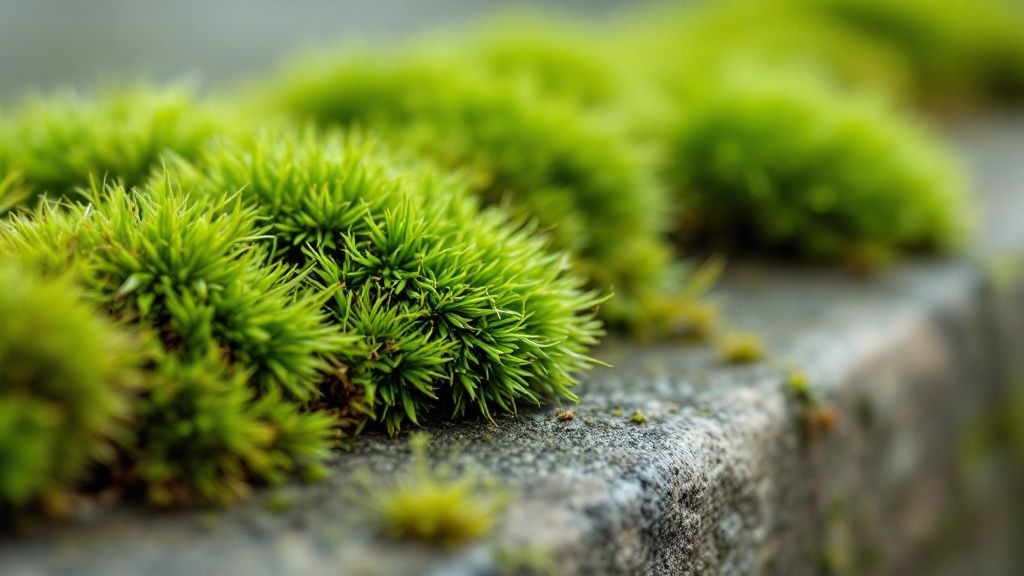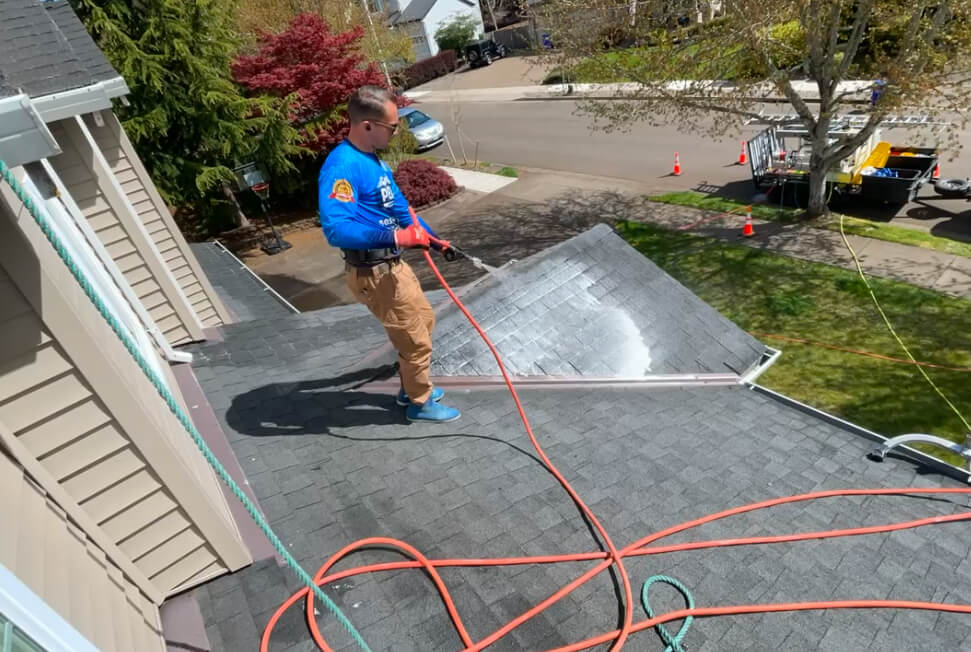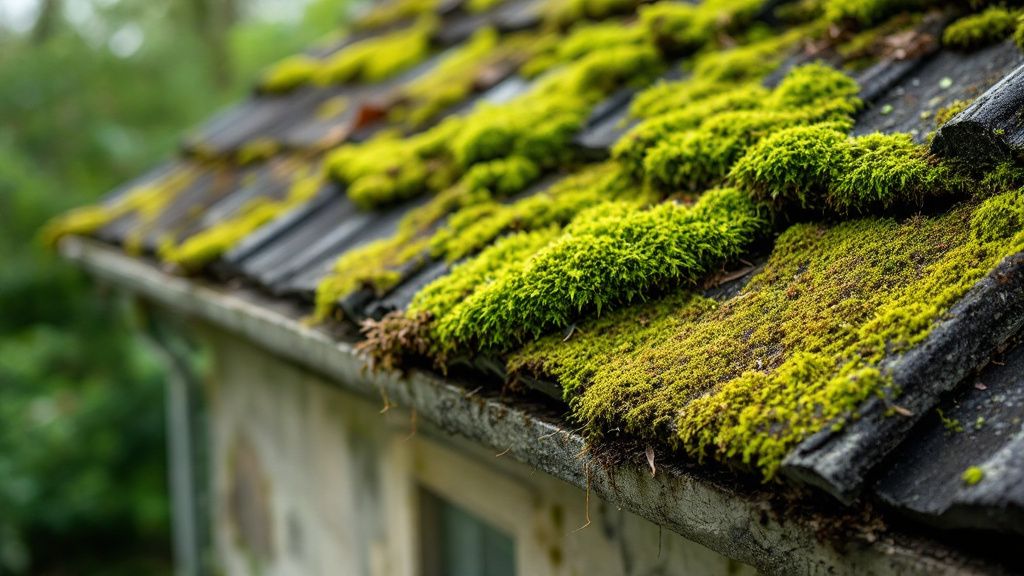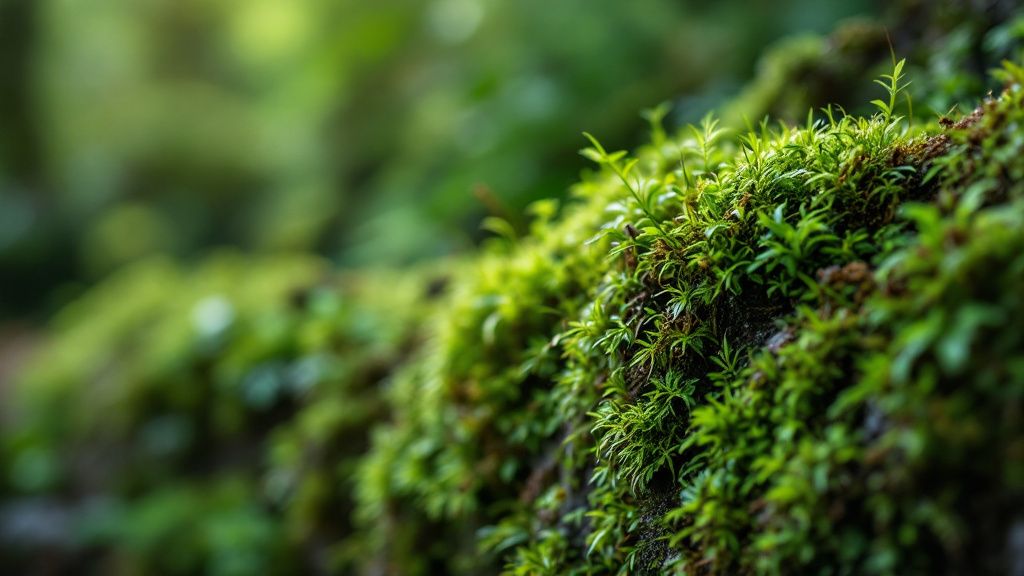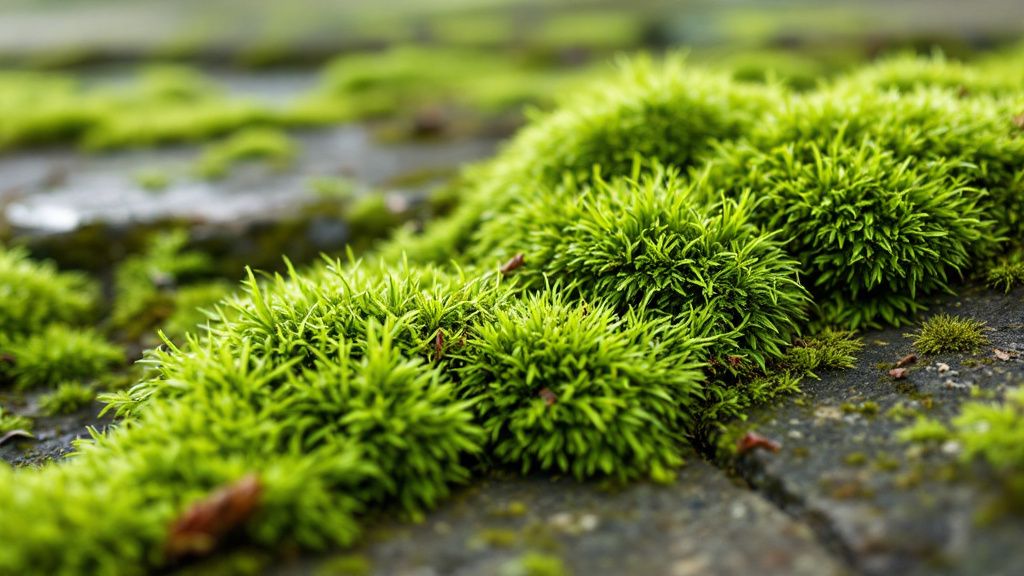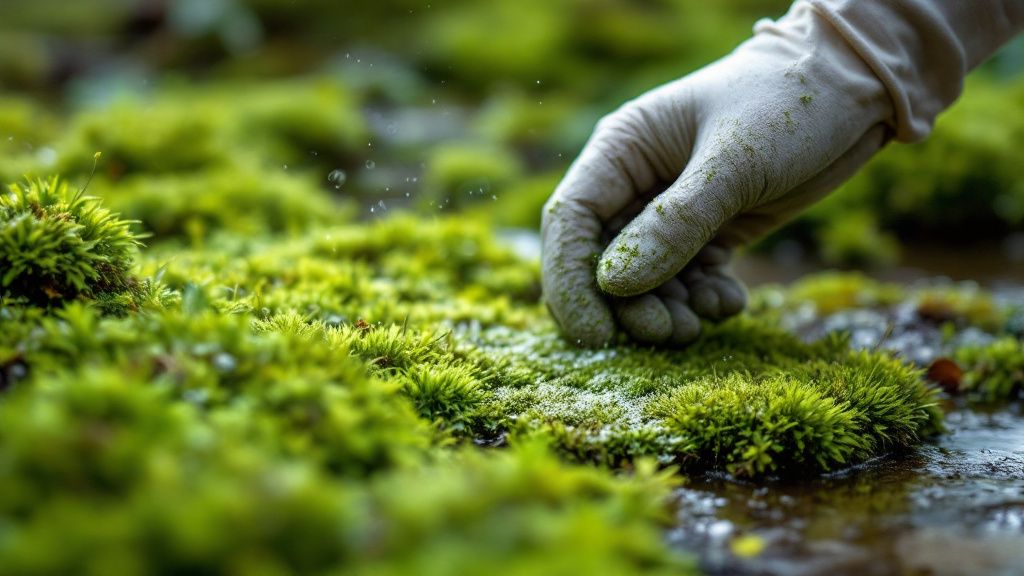In maintaining the beauty and integrity of your home, it’s crucial to implement effective methods to deter moss from finding its way into your living space. Moss thrives in damp, shaded areas, making it essential to keep your environment dry and well-lit. Start by trimming back overgrown trees and shrubs to ensure sunlight can reach shaded corners of your property. Regular gutter cleaning prevents water from settling and creating ideal conditions for moss growth. Consider moss-resistant roof materials if you’re in the market for replacements.
While pressure washing is a powerful tool for moss removal, consistent checks and maintenance play an integral role in prevention. When thinking about how to prevent moss, focus on maintaining proper ventilation and airflow, which reduces moisture accumulation indoors, disrupting any plans moss might have of entering your household. Keeping moss at bay requires a proactive approach and employing strategies like these will significantly reduce the chance of that unwelcome green guest settling in your home.
Understanding Moss Growth
Moss, a simple, primitive plant, thrives where few others can. Visualize moss as nature’s green carpet; just as a carpet spreads across a floor, moss blankets surfaces, seizing any opportunity to grow without roots. Its forte lies in its ability to colonize spaces with ample moisture and minimal sunlight. This remarkable adaptability often results in moss appearing in unwelcome places around your home, making its management a priority.
Understanding how moss takes hold is crucial in preventing its spread. Moss spores are transported by wind and water, and once they find a conducive spot with shade and moisture, they can rapidly flourish. This process showcases moss’s resilience, growing steadily on surfaces like roof shingles, driveways, and around outdoor fixtures.
Moisture is a key factor for moss growth; hence, managing damp areas is essential. As you explore how to clean moss and employ the best ways to get rid of moss, consider regular checks for leaks or standing water which can promote moss in-house growth. Paying attention to these potential problem areas can help in effective moss removal while also considering how to prevent moss from returning. By recognizing these patterns, you’ll be better prepared to tackle unwanted growth.
Impact of Moss on Home Structures
The presence of moss can have a significant impact on home structures, often going unnoticed until it causes notable damage. On roofs, moss retains moisture, leading to shingle deterioration and potential leaks. This moist environment can encourage rot, weakening the integrity of the roof. On pathways and driveways, moss creates a slippery surface that poses safety risks, highlighting why it’s essential to consider solutions for moss removal.
Experts note a growing trend in addressing moss-related damage, particularly due to increasing awareness of its potential risks. Many homeowners now seek pressure washing services or specialized moss cleaning solutions to counteract these issues. This increased focus on proactive maintenance is helping prevent the long-term consequences moss can inflict on home structures. As awareness grows, so does the demand for professional moss cleaning services.
Regular inspections and timely moss removal are critical to preserving your home’s structure and safety. Considering how to clean moss effectively means staying ahead of its advance, preventing damage before it necessitates costly repairs. By understanding the factors contributing to moss growth, you can better manage its impact and maintain the structural integrity of your home, keeping it safe from the persistent green invader.
Environmental Factors Leading to Moss Accumulation
Moss thrives in environments that offer abundant moisture and shade, making certain areas around your home prime targets. Locations with dense tree coverage, poor sunlight exposure, and high humidity levels create ideal conditions for moss growth. In regions characterized by frequent rainfall, the persistent damp atmosphere further contributes to moss accumulation on various surfaces, including roofs, driveways, and walls, necessitating regular maintenance efforts.
Inadequate drainage is another significant factor leading to moss proliferation. Water that lingers on surfaces due to blocked gutters or uneven terrain encourages moss to establish and spread. Ensuring that gutters are clear and that your property has proper water runoff systems can help in managing and preventing these conditions.
While some factors like shade are unchangeable, others, such as moisture control, can be effectively managed. Exploring how to prevent moss involves assessing these environmental contributors and taking proactive steps. Routine inspections, combined with strategic cleaning solutions, help mitigate the accumulation of moss, promoting a healthier and more aesthetically pleasing living space.
Prevention Tips to Keep Moss Away
To effectively keep moss at bay, consider implementing a series of practical prevention strategies. Start by ensuring adequate sunlight reaches potential moss-prone areas. Trim overgrown trees and bushes that cast shadows on roofs and walkways, as increased light exposure can deter moss growth. Regularly inspect your property for shaded, damp spots, and address them promptly to prevent moss from taking hold.
Maintaining efficient drainage systems is crucial. Clean your gutters regularly to prevent water from pooling, which provides a desirable environment for moss. It might be worth considering landscape adjustments to encourage proper water runoff. By controlling moisture, you significantly reduce the likelihood of moss accumulation. These proactive steps also reduce the need for moss removal methods later on.
One unpopular opinion about moss prevention suggests that using chemical treatments is unnecessary. While some favor chemical moss cleaning solutions, natural methods such as encouraging more sunlight and airflow are effective without introducing potentially harmful substances into your environment. Opting for eco-friendly solutions can be just as successful in keeping moss at bay while maintaining a healthy ecosystem around your home.
In areas prone to frequent rainfall, protective measures like applying moss-resistant roof treatments can be advantageous. These treatments provide an extra layer of defense by reducing the surface’s susceptibility to moss growth, making regular roof maintenance more manageable. Investing in these products can spare you from the frequent use of pressure washing moss and other intense cleaning methods.
Routine maintenance is pivotal for preempting moss issues. Regular checks help in identifying early signs of moss activity, allowing you to take immediate action. Remember, engaging professional moss cleaning services can provide you with expert solutions that cater to your home’s specific needs. With these prevention tips, you’ll create an environment that discourages moss from infringing on your home.
Natural Solutions for Moss Control
Finding natural solutions for controlling moss involves looking towards methods that have stood the test of time. Tracing its evolution from historical periods, techniques such as sun exposure and airflow have been long-standing in addressing unwanted growths around homes. Increasing natural light and maintaining ventilation disrupt the moist environments that moss thrives in, providing a sustainable and environmentally friendly approach to moss control without relying on chemicals.
Consider using natural anti-moss mixtures created from household items. A simple recipe includes mixing water with vinegar, which acts as a natural moss inhibitor. This solution can be sprayed directly onto areas showing moss activity, offering an effective and gentle way to manage growth. Complementing these methods with regular maintenance, like cleaning and trimming, enhances their effectiveness, ensuring your home remains moss-free while respecting its natural surroundings.
Non-toxic Chemical Treatments
Using non-toxic chemical treatments can be an effective approach to control moss without harming your surrounding environment. These treatments, often derived from natural ingredients, are designed to target moss specifically while minimizing impact on other plant life and soil. They offer an advantageous middle ground between natural methods and conventional chemical options, balancing effectiveness with environmental responsibility.
On one hand, Perspective A sees non-toxic chemicals as a safe alternative to traditional harsher options, ensuring the environment remains unharmed. However, Perspective B argues that even non-toxic solutions can be unnecessary if natural methods provide similar results. This highlights the ongoing debate on whether these treatments are a needed innovation or simply an over-cautious approach in moss control.
When considering how to clean moss with these treatments, it’s important to follow the manufacturer’s application guidelines closely. Regular application can ensure long-term prevention of moss without recurring dependence on intense methods like pressure washing moss. With careful use, non-toxic treatments can be an effective tool in your moss removal arsenal, offering peace of mind regarding environmental health and personal safety.

